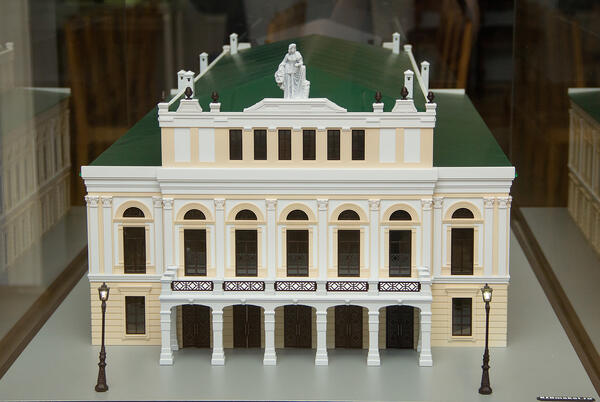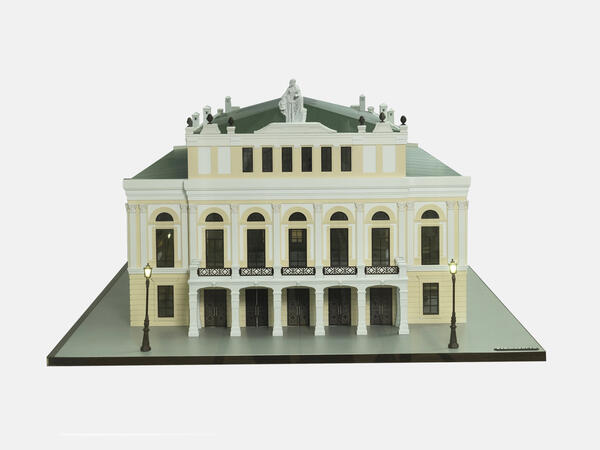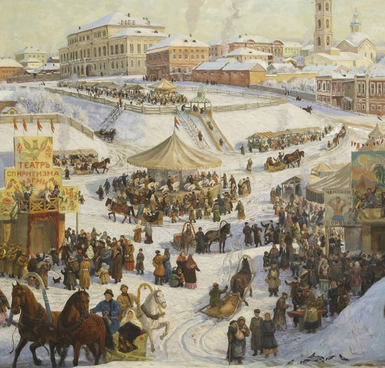The story of the Kazan City Theater began in 1799. It was decided to build the theater on Teatralnaya Square, which nowadays is known as Svoboda Square. The first two buildings of the theater were wooden and perished in city fires.
In 1852, a new stone building was erected, which also burned down and by 1919 was rebuilt several times. The latest fire lasted three days and destroyed not only the theater, but also a large library with rare sheet music, old scenery, and thousands of costumes.
On May 17, 1883, at the age of ten, Feodor Chaliapin first visited the Kazan Theater; back then, the building looked just like the displayed maquette. The boy got into the city theater by getting a “spare ticket”. Together with other boys from the church choir, he stood in the gallery, holding onto the ceiling with his hands. That day the theater was giving the play “16th Century Russian Wedding” by Pyotr Sukhonin. Chaliapin was shaken to his core and began to dream passionately about the theater. “The theater almost drove me out of my mind, ” the artist recalled years later.
The interior of the Kazan Theater was lavishly decorated: the hall with excellent acoustics accommodated 1150 people, and the grand drape was painted by Mikhail Bocharov — one of the best decorators of tsarist Russia. He illustrated Alexander Pushkin’s poem “Ruslan and Lyudmila” and embodied the images from its prologue — “By the bow-curve of the seashore there is a green oak…”
Above the amphitheater, there was a chandelier with shiny crystals and a gilded bottom hanging from the painted ceiling. The theater had 30 boxes, 8 baignoires, and 50 appointed seats in the front section. The stage was very extensive, and its flooring was equipped with everything necessary for replacing, transforming, and moving the scenery. There was also a small “concert hall” arranged in the theater.
At the Kazan City Theater, Feodor Chaliapin was introduced to the private theatrical enterprise of the famous Russian theater manager Pyotr Medvedev. He staged seven operas in Kazan — “A Life for the Tsar”, “Ruslan and Lyudmila”, “Rusalka”, “Askold’s Grave”, “The Troubadour”, “Faust” and “The African Woman”, which greatly influenced Chaliapin. Dmitry Usatov, Feodor Chaliapin’s future teacher, was a member of the first opera troupe at the Kazan Theater.



